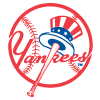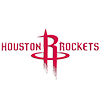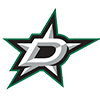If you're a devotee of RotoWire's baseball coverage, you're probably familiar with a couple of columns here -- most notably, Kevin Payne's MLB Barometer and Lane Rizzardini's Line-'Em Up -- that deal expressly with changes to major-league rosters and their (i.e. the changes') effects on players' roles (and, consequently, fantasy owners' own rosters).
In Some Depth, which will be my own humble contribution to the excellent work that appears in these pages, will add another voice to that conversation -- but will cast a gaze specifically on the state of the league's depth charts, which I'm responsible for tracking here at RotoWire (at our dedicated Depth Charts section) as player roles change within the major league's thirty organizations.
Even with this distinction, you might wonder, "Will there be overlap between In Some Depth and the work that Kevin and Lane (and probably some others) produce for RotoWire?" The answer to that is "almost definitely." Is that a bad thing, though? Absolutely not -- for two reasons.
First, insofar as my work here will be similar to other work appearing at RotoWire, it'll also be different enough so's to maybe consider situations that other articles overlook. And, second, even in those instances where there is legitimate overlap between In Some Depth and/or Kevin's Barometer and/or Lane's own column, it's inevitable that each of us will have take a slightly different approach or reach a slightly different conclusion from the others.
Really, in the end, information is a good thing,
If you're a devotee of RotoWire's baseball coverage, you're probably familiar with a couple of columns here -- most notably, Kevin Payne's MLB Barometer and Lane Rizzardini's Line-'Em Up -- that deal expressly with changes to major-league rosters and their (i.e. the changes') effects on players' roles (and, consequently, fantasy owners' own rosters).
In Some Depth, which will be my own humble contribution to the excellent work that appears in these pages, will add another voice to that conversation -- but will cast a gaze specifically on the state of the league's depth charts, which I'm responsible for tracking here at RotoWire (at our dedicated Depth Charts section) as player roles change within the major league's thirty organizations.
Even with this distinction, you might wonder, "Will there be overlap between In Some Depth and the work that Kevin and Lane (and probably some others) produce for RotoWire?" The answer to that is "almost definitely." Is that a bad thing, though? Absolutely not -- for two reasons.
First, insofar as my work here will be similar to other work appearing at RotoWire, it'll also be different enough so's to maybe consider situations that other articles overlook. And, second, even in those instances where there is legitimate overlap between In Some Depth and/or Kevin's Barometer and/or Lane's own column, it's inevitable that each of us will have take a slightly different approach or reach a slightly different conclusion from the others.
Really, in the end, information is a good thing, and it's a testament to the depth of RotoWire's coverage that the greatest problem we must consider is that two or three columns might be too similar.
Before beginning in earnest to examine specific depth-related cases, I want to spend this week defining some terms and establishing some guiding principles for this weekly column and for fantasy ownership, generally. For, even though I hope you read this column religiously and thrust your fist into the air each time a new edition finds its way to your computer screen, the fact is that tending a fantasy roster is more or less a daily activity. Every day there are injuries, there are minor leaguers pushing for a major-league job, there are major leaguers struggling for one reason or another. Given that this will be a weekly column, it will be impossible for me to ably cover every depth-chart related situation in a timely enough manner for owners to take advantage.
Hopefully, then, what follows makes explicit the principles that will inform this column for the duration of the season -- and, in so doing, give you some tools to dealing with roster changes in a meaningful way.
Basically, it's like that famous saying: "Give a man a fish and you feed him for a day; teach that man to fish and you feed him for a lifetime. Unless the man's just not very good at fishing, that is, in which case he should probably find a desk job of some kind."
Wait, where was I? Oh yes, here are five circumstances that create room for value in fantasy baseball:
Personnel Changes
Personnel changes have the most significant effect on the shape of a roster, as they can often involve the addition of a player without a corresponding subtraction at that player's position on the depth chart. In the offseason, we track free-agent signings and (in some cases) trades; suring the season, trades alone are more common. Anytime a player moves, there's a ripple effect of consquences.
Consider this offseason, when the Red Sox acquired Carl Crawford, the sort of chain reaction the move had. For instance, we knew that Jacoby Ellsbury, were he healthy, would likely move back to center field. We knew that Mike Cameron -- a pretty excellent power/speed package in a full-time role -- would likely be relegated to serving as the Sox' fourth outfielder. With Cameron still on the roster, it obviously meant, too, that Ryan Kalish -- who'll become a 20-20 threat the second he gets a starting major-league job -- would play most of the season in Triple-A.
For the Rays, the effects were significant, as well. The departure of Crawford left a huge vacancy in left field. It appeared the job would fall to Desmond Jennings -- a serious, if still somewhat raw, stolen-base threat. Then Tampa acquired Johnny Damon and Manny Ramirez, which pushed back Jennings' clock somewhat. The abrupt retirement of Manny Ramirez (probably one of the least commong types of personnel changes) changed the complexion of the Rays once again.
Anytime there's a trade or signing, it's best to take a moment to make a note -- actual or mental, whichever you prefer -- of how it'll affect not only the players involved, but the players left behind, too. When the Rangers signed Adrian Beltre, for example, that hardly affected Beltre's value at all -- he was always going to get a ton of plate appearances. The player it really affected was Michael Young, a high-average player who's now been relegated to a weird DH-type role.
Injury
While injuries are bad for the owners of the injured, they (i.e. injuries) also create opportunities. Again, as with trades or free-agent signings, it's imperative to consider not just the actual players involved, but the players who will likely fill in the vacuum of the injured player's absence.
Owing to the frequency of injuries among pitchers, there's often a great deal of value to be found here. An injury to a starting pitcher opens up a spot in the rotation. Maybe a swingman takes the spot; maybe the organization opts to promote a journeyman from Triple-A -- or, more excitingly, a legitimate prospect.
Even this season, we've seen a number of opportunities created by pitcher injuries. Texas Ranger Tommy Hunter's groin strain has opened up an opportunity for Alexi Ogando (likely a superior pitcher, anyway). Adam Wainwright's Tommy John surgery has made a starter out of Kyle McClellan. An injury to Jair Jurrjens' oblique created a start for Mike Minor.
It's certainly not the case that every replacement starter is superior to the pitcher he's replacing (otherwise, why wouldn't the replacement just be a starter in the first place), but it happens often enough to make it worth an owner's time.
Poor Performance
While we're certainly not at a point yet in the season where we can make any definitive claims about significant changes to players' true-talent levels, it's still the case that poor early-season performances can damage a player's hold on starting role.
Consider: through 32 at-bats, Atlanta center fielder Nate McLouth is slashing .219/.265/.250 and has failed to hit a home run or steal a base (he's 0-for-1, actually, on stolen-base attemts). Were this Josh Hamilton, it wouldn't even be an issue. Yeah, everyone would notice and wonder about the "slump," but winning an MVP trophy does enough for job stability that eight games is unlikely to undo.
McLouth, however, doesn't have the benefit of an MVP trophy. In fact, he batted just .190/.298/.322 in about half a season last year, and wasn't even all that impressive (.234/.338/.383) in Triple-A. Meanwhile, Atlanta has at least three players -- Matt Young, Jose Constanza, and Jordan Schafer -- who could replace McLouth should his hitting woes continue and are interesting enough for one reason or another to consider as waiver-wire additions in deep leaguers.
Identifying those instances where players have little job security, and anticipating which players might benefit from any sort of roster changes, is a way for the fantasy owner to use depth charts to his benefit.
Platoons
Pittsburgh outfielder Matt Diaz is a .333 hitter in 738 career at-bats, has slashed .333/.372/.531 overall, and yet hardly gets any kind of mention in fantasy circles. Why?
Well, unfortunately, those are only his numbers against left-handed pitchers. Against righties, his body of work is considerably more pedestrian: .269/.327/.381 in 780 at-bats.
Diaz' platoon split is more extreme than most hitters will show, but it reveals something the reader will likely already know: batters generally hit better against opposite-handed pitchers. Unsurprisingly, baseball managers know this, too, and use the information to less or greater extents.
As I type these words, actually, Mike Cameron is starting in center field for the Boston Red Sox while Jacoby Ellsbury sits on the bench. The reason? CC Sabathia is starting for the Yankees. While the occasional start against difficult lefties isn't enough to give Cameron much value, it's certainly enough to make Ellsbury -- one of the most proficient base-stealers in the American League -- slightly less valuable.
Minor Leaguers
There are instances when a minor leaguer, by virtue of a dominant run, makes it impossible for his parent club not to promote him to the majors. This was obviously the case with Stephen Strasburg last year: in 11 starts between Double- and Triple-A he pitched 55.1 innings and recorded 65 strikeouts against only 13 walks. This, combined with his draft pedigree, made his major-league arrival inevitable.
More recently, we've seen the case of San Francisco prospect Brandon Belt. Over three levels last season, Belt slashed .352/.455/.620, went 22-for-30 on stolen bases, and walked almost as many times as he struck out. After an Arizona Fall League appearance that saw him slash .372/.427/.616 and a good spring training, the Giants named him their Opening Day starter.
Just as with the instances above, the promotion of a talented prospect affects more than just the prospect himself. Because Belt would be taking over first base, that meant that veteran Aubrey Huff would move to the outfield. Huff's move has created fewer opportunities for Mark DeRosa and Aaron Rowand as a result.





































